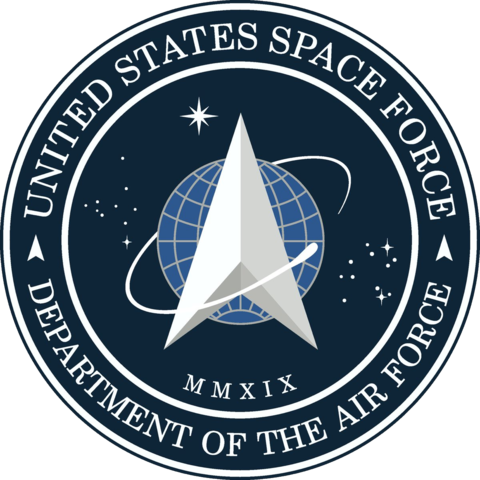8.6.03: Military Recruitment and the Media
- Last updated
-
-
Save as PDF
Recruiting soldiers to serve in the nation’s military offers an example of the complex political dynamics surrounding the government's enumerated and implied powers.
The Constitution gives the federal government the enumerated power to raise armies and a navy. Article I states Congress has the power "to provide for the common Defense and general Welfare of the United States."
But, establishing a draft (mandatory enrollment in the armed forces) is an implied power that was used at different times in U.S. history from the Civil War to 1973. The first peacetime draft, the Selective Training and Service Act, was instituted in 1940 just before U.S. entry into World War II. In 1939, the U.S. army consisted of 174,00 soldiers. Between 1940 and 1947, 10 million men entered the nation's armed services (Training the American GI, National World War II Museum).
The U.S. military has been an all-volunteer force since that time with now more than 1.3 million active troops in six armed services: Army, Navy, Air Force, Marine Corps, Coast Guard, and Space Force.

Figure \(\PageIndex{1}\): Seal of the United States Space Force | Public domain
Presently, men ages 18 to 25 are required to register with the Selective Service System in case the draft were reinstituted. Women do not have to register and cannot be drafted, although all combat jobs in the military are open to volunteer women enlistees. Women presently make up 16% of all enlisted personnel and 19% of military officers (Demographics of the U.S. Military, Council on Foreign Relations, July 13, 2020).
There are multiple debates surrounding what Congress should do with its implied powers regarding military service.
- Should the United States continue with all-volunteer armed forces?
- Should the demographic composition of the military more closely resemble society as a whole?
- Should military service be mandatory for all young people, as it is in many countries around the world?
- Is excluding women from the draft unconstitutional?
- Should Congress use its implied powers to institute a militaryor national service option where women and men have the option of joining the Armed Services or participating in infrastructure projects like the Civilian Conservation Corps during the New Deal?
In this activity, you will investigate how the military uses the media to recruit individuals into the armed services as a backdrop to whether the U.S. should continue to have all-volunteer forces.
Activity: Assess Media Use for Military Recruitment
- Choose two of the following armed services: Army, Navy, Air Force, Marine Corps, Coast Guard, and Space Force.
- Conduct Internet research to examine how the two armed services you selected use media (e.g., websites, posters, graphics, videos, social media, and podcasts) to recruit members.
- Compare and contrast the use of media by the two different armed services you selected.
- How does each armed force seek to convince young people to enlist?
- What visuals and colors do they use? Why do you think that is?
- How do they use language to motivate people to enlist?
- What biases or stereotypes are built into the media you reviewed?
-
- Who is their intended audience (based on the visual design and language used)? Or, do they have different intended audiences based on the platform they use (e.g., website vs. Facebook vs. Instagram)?
- Based on your research, do you think that the use of media to recruit individuals into the military is an effective means of ensuring that the military will have enough service members or should Congress use its implied powers to institute mandatory military/national service instead of an all-volunteer armed forces? Why or why not?
- Present your findings and recommendation as a curated virtual collection (e.g., Wakelet, Padlet, Jamboard) of media (e.g., recruitment posters/YouTube ads) and your own commentary (as text, video, or audio).
Additional Resources
Connecting to the Standards
- Massachusetts Civics & Government Standards
- Distinguish among the enumerated and implied powers in the United States and the Massachusetts Constitution. (Massachusetts Curriculum Framework for History and Social Studies) [8.T6.3]
- ISTE Standards
- Knowledge Constructor
- 3a: Students plan and employ effective research strategies to locate information and other resources for their intellectual or creative pursuits.
- 3b: Students evaluate the accuracy, perspective, credibility and relevance of information, media, data or other resources.
- 3c: Students curate information from digital resources using a variety of tools and methods to create collections of artifacts that demonstrate meaningful connections or conclusions.
- 3d: Students build knowledge by actively exploring real-world issues and problems, developing ideas and theories and pursuing answers and solutions.
- Creative Communicator
- 6a: Students choose the appropriate platforms and tools for meeting the desired objectives of their creation or communication.
- 6b: Students create original works or responsibly repurpose or remix digital resources into new creations.
- DLCS Standards
- Interpersonal and Societal Impact (CAS.c)
- Digital Tools (DTC.a)
- Collaboration and Communication (DTC.b)
- Research (DTC.c)
- English Language Arts > History/Social Studies Common Core Standards
- CCSS.ELA-LITERACY.RH.6-8.5
- CCSS.ELA-LITERACY.RH.6-8.6
- CCSS.ELA-LITERACY.RH.6-8.7
- CCSS.ELA-LITERACY.RH.6-8.8
- CCSS.ELA-LITERACY.RH.9-10.5
- CCSS.ELA-LITERACY.RH.9-10.9
- CCSS.ELA-LITERACY.RH.11-12.5
- CCSS.ELA-LITERACY.RH.11-12.7


